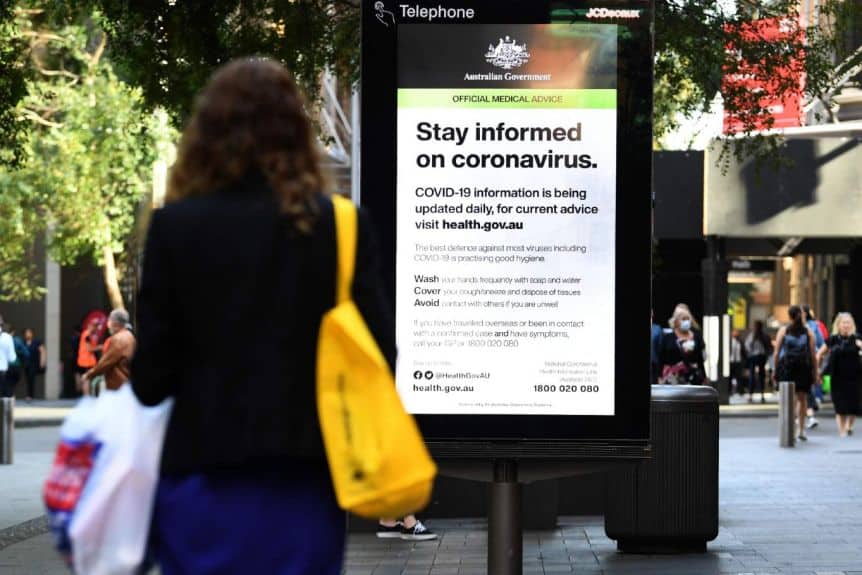
The National Cabinet met on Friday to further discuss Australia’s current COVID-19 response, easing restrictions in the coming months, helping Australians prepare to go back to work in a COVID-safe environment and getting the economy moving again.
The Chief Medical Officer, Professor Brendan Murphy, provided an update on the measures underway, the latest data and medical advice in relation to COVID-19.
Treasury Secretary, Dr Stephen Kennedy, provided an update on the labour market and current economic conditions.
There have been over 7,500 confirmed cases in Australia and sadly 104 people have died. There are now around 500 active cases in Australia, and over the past week, daily infection rates have remained low. Testing remains high, with more than 2.2 million tests undertaken in Australia.
National Cabinet discussed the localised outbreaks in Victoria and the health response underway and committed to providing as much support as is necessary. Localised response plans are part of the Three-Step Framework for easing restrictions agreed by all jurisdictions. Victoria is responding well, including with testing and tracing, and the Commonwealth and other jurisdictions stand ready to assist where needed.
National Cabinet recommitted to the strategy of suppression of COVID-19 and to the Three-Step Framework to a COVID-safe Australia.
We need to continue to have the right controls in place to test more people, trace those who test positive and respond to local outbreaks when they occur. These are Precedent Conditions to enable Australia to relax baseline restrictions and enable Australians to live and work in a COVID-safe economy.
National Cabinet thanked Professor Murphy for his work on the COVID-19 response and wished him well in his new role as Secretary of the Commonwealth Department of Health.
National Cabinet will meet again on 10 July 2020.
Localised Health Response
National Cabinet discussed the outbreaks in Victoria and how best to ensure a coordinated, cross-jurisdictional response to localised health outbreaks going forward.
The National Cabinet agreed to a new plan for Australia’s Public Health Capacity and COVID-19. Under the plan developed by the AHPPC, six actions for state, territory and Commonwealth governments will improve long term sustainability of the public health workforce for the remainder of COVID‑19 and beyond by:
- strengthening a formal surge plan for the public health response workforce and review the ongoing structure of the public health units;
- progressing the national interoperable notifiable disease surveillance system (NINDSS) project and prioritise appropriate interfaces;
- establishing a national training program for surge workforce;
- better support the Communicable Disease Network of Australia (CDNA), including shared costs;
- prioritising enhancing the public health physician workforce capacity; and
- considering options for developing a formal public health workforce training program.
Hotel Quarantine
National Cabinet confirmed that the current hotel quarantine arrangements remain in place. In addition, National Cabinet agreed that further testing will be conducted for all those in hotel quarantine, including within the first 48 hours in quarantine and then on day 10-12 of quarantine.
Roadmap for arts and entertainment venues
National Cabinet asked AHPPC to develop a roadmap for re-opening arts and entertainment venues, in particular to enable planning for productions to commence.
This will build on the AHPPC Statement on the safe return of crowds to stadiums, arenas and large theatres. Under this plan the AHPPC advises that in Step 3, seated and ticked events may take place with crowd limits for example, stadiums with a capacity of up to 40,000 people may operate at 25 per cent seating capacity and stadiums with a capacity of greater than 40,000 people may not have more than 10,000 people. In later steps, states and territories may allow all large venues to admit larger crowds provided there is no evidence of community transmission, the event is seated and ticketed, physical distancing and other public health measures are maintained, and all public health risks are managed.
Small venues and physical distancing
National Cabinet agreed that under Step 3 of the Framework for a COVID-safe Australia and based on AHPPC advice, states and territories can allow small premises to apply a one-person, per two square-metre rule with a COVID-safe plan in place.
Federation Reform
National Cabinet today agreed that former Director-General of the Western Australian Department of Premier and Cabinet and former Commonwealth Cabinet Secretary Mr Peter Conran AM will lead the review of the former COAG Councils and Ministerial Forums with a view to rationalise and reset their work. National Cabinet also agreed to Terms of Reference for the Review which set out avenues for consultation with Commonwealth and state and territory ministers and officials.
National Cabinet agreed that Review will make recommendations on a streamlined structure, scope and reporting arrangements and on focused regulatory and policy work programs. The review will provide recommendations to National Cabinet by September 2020.
Additional Papers
National Cabinet endorsed a number of papers to enable reopening under a 3 Step Framework for a COVID Safe Australia:
- AHPPC Statement on the review of physical distancing and person density restrictions including for smaller venues;
- AHPPC Statement on Hotel Quarantine;
- AHPPC Statement on risk management for boarding schools and school‑based residential colleges;
- AHPPC Statement to update residential aged care facilities about minimising the impact of COVID-19;
- AHPPC Statement on preliminary media reports of the results of a randomised trial of the use of dexamethasone;
- AHPPC Statement on recent outbreaks of COVID-19 in Victoria;
- AHPPC Statement on the safe return of crowds to stadiums, arenas and large theatres; and
- Australian aviation industry’s protocol.

